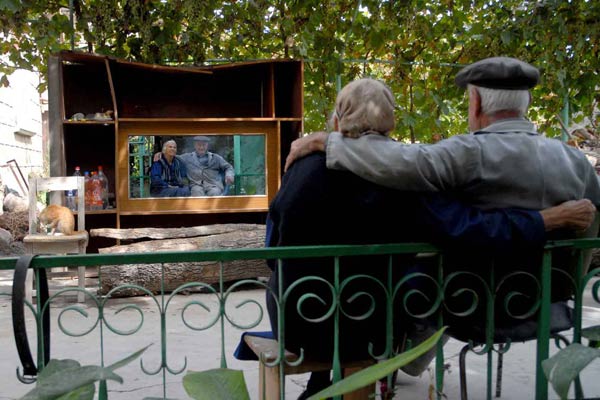 Until November 30, 2012 there were 206 new HIV cases registered in the RA, and the number is higher than during the past years. Generally, 30% of people living with HIV, 405 individuals, are women in Armenia.
Until November 30, 2012 there were 206 new HIV cases registered in the RA, and the number is higher than during the past years. Generally, 30% of people living with HIV, 405 individuals, are women in Armenia.
And in the whole world nearly half of all HIV-positive cases are already registered among women; as a matter of fact, in sub-Saharan Africa women are the majority among new registered HIV-positive cases. A question arises then: when the statistics show that men engage in more risky behaviors than women, then how come that there are more women living with HIV than men?
The reason is the profound political, social, economic and sexual subordination, provisioned by laws and mirrored in cultures and lifestyles. Discrimination, stigma and violence are also everyday phenomena for many women living with HIV.
The vulnerability of women toward HIV/AIDS may be regarded by two main perspectives:
- biological factors,
- social factors.
From the perspective of biology, the risk of women becoming HIV-infected is twice as higher as that of men because of the following factors:
- sperm is more overloaded with virus than the vaginal discharge,
- the tunic of vagina is thinner than the foreskin,
- sperm stays in the vagina longer,
- micro cracks meet among young women more often,
- during sexual intercourse, the woman’s body is the receiver.
Gender roles and relationships greatly affect on the process and consequences of HIV/AIDS. Gender inequality is one of the main powers contributing to the spread of AIDS. All the particularities and roles that the society distinguishes for women and men often become the ways that are needed to protect oneself against HIV/AIDS and overcome the consequences of it. For that particular reason, in order to prevent the spread of HIV, it is necessary to grant women equal rights and opportunities in all spheres.
A number of factors exist that make women and girls more vulnerable towards HIV. Here we may mention those social norms and factors that don’t allow women to get the necessary knowledge and information on sexual health, to be the owners of their bodies and their sexual lives.
- By laws of a number of states, the rights of women such as the right to be a proprietor, to inherit property and dispose it, are limited. Women become victims of inequality and face it while getting education, loans, work and divorce. Legal and social inequality makes women economically depended from their husbands by compelling them to conform in situations when they can’t refuse having sexual intercourse with them or to use condoms during the intercourse.
As social worker of “Real World, Real People” NGO Anna Avetisyan notes: “This situation is especially palpable in our country. The prospects are, above all, different in rural and urban communities. Workers of the organization have held informative campaigns in all marzes of Armenia, they’ve met with girls and women of rural communities and given counseling to them. Yet, education and the fact of being informed do not guarantee for healthy relationships. Women are more often regarded as sexual objects, they could also be subjected to violence if they reject having sexual intercourse or suggest using a condom (even if the husband exhibits some risky behavior and the wife knows about that).
Women often end up in poverty after the death or divorce from their husbands because of which their choices and opportunities grow to be so restricted that they unwittingly start having sexual acts in exchange for money, or become victims of sexual exploitation or violence in domestic or working situations. Each of the abovementioned factors arise the risk of contracting HIV for women.
- Violence against women in itself is a phenomenon spread throughout the world which is also a cause of high rates of new cases of HIV. In the case of women the risk of contracting HIV is higher when sexual intercourses take place with compulsion rather by mutual agreement. Violence and the fear of becoming a victim of it may make women abstain from getting tested for HIV, from requiring using condoms or from informing about their HIV status to their sexual partners.
“In many Armenian families, when women become HIV-positive, it is their husbands and the family of the husband that are informed about that. Regardless the fact that 98% of women living with HIV got it from their primary partners in the RA, yet it is mostly women that are subjected to discrimination in their families after disclosing their HIV status. And it is their mothers in law who mainly discriminate them. And the members of the family of the girl mostly are not informed about the HIV status of their daughters: they prefer to hide it from their own parents. In a situation like that, even the issue of divorce becomes a trouble”, adds A. Avetisyan.
For a number of women living with HIV/AIDS, healthcare system is not a place of treatment and care; it is rather a place where they deal with prejudice and discrimination. In any region of the world the availability of reproductive health services for women and girls, the most vital of prerequisites to prevent HIV, is not only very low, but it is also limited in terms of laws and functions. If the woman is found to be HIV-positive, she then is subjected to accusations and violence which avoids her from HIV testing and treatment services. Nurses sometimes judge or disparage women who are expectant and live with HIV, instead of preventing the transmission of HIV to child, which is a proven scientific treatment.
Nvard Margaryan
Sources: “Human Rights and HIV/AIDS: Now, More than Ever” 10 reasons why human rights should occupy the center of the global AIDS struggle



